Best road bike wheels 2025: disc and rim wheelsets to supercharge your ride, reviewed and rated
Our complete guide to what to look for in the best road bike wheels, including the type of rim, the material, and the depth you should go for
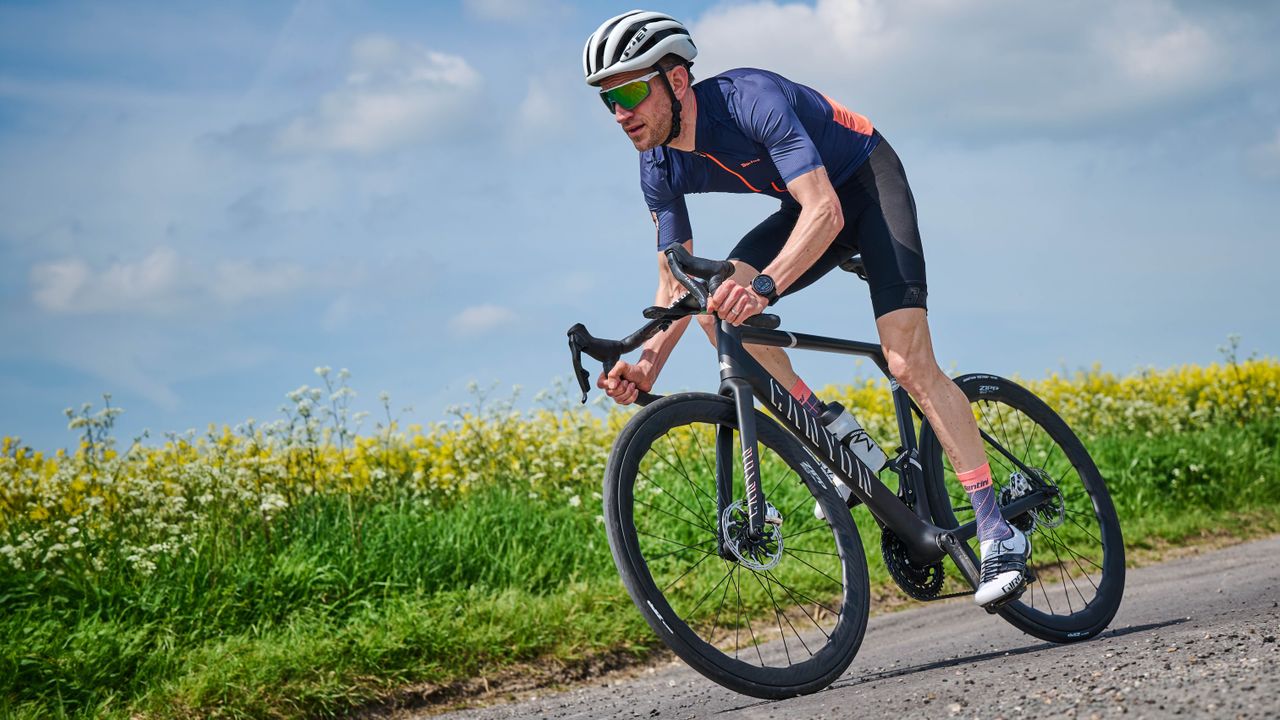
- The Quick List
- Best all-rounder
- Best aero
- Best lightweight
- Best for windy days
- Affordable Zipps
- Best value aero
- Best Value
- Best for stiffness
- Rim brakes
- Best aluminium rims
- Best rim brake
- Stiff and light
- How to choose the best road bike wheels
- Different types of road bike wheels
- FAQs
- How we test
- Glossary

One surefire way to unlock performance in your road bike is with a new set of the best road bike wheels. Often, in an area where the majority of bike manufacturers economise to meet a price point, even the best road bikes won’t be meeting their full potential.
Recent developments in materials technology have unlocked previously impossible freedoms within wheel engineering. Disc brakes and the wide adoption of tubeless tyres have been big catalysts for this leap forward in wheel performance.
Nevertheless, millions of rim brake road bikes still exist, featuring wheels designed for clincher tyres and catering to those who prefer the simplicity of an inner tube. This includes several members of the Cycling Weekly team.
With so many depths, widths and compatibilities to consider, buying a new set of road bike wheels can be a bit of a minefield. We've tried to make things simple with our pick of the best road bike wheels. All of the wheels featured below have been reviewed by one of our team for either our magazine or directly for this site. Although not an exhaustive list, it includes disc and rim wheelsets. For more advice on choosing the right road wheels for you, head to the bottom of this page.
If you're looking for new wheels for an allroad or gravel bike, we have a selection of those over on our best gravel bike wheels guide.
The Quick List
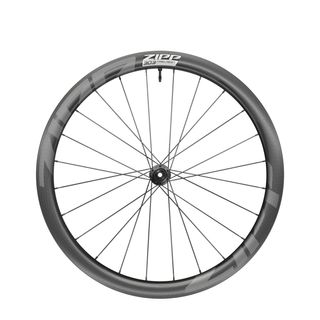
Best all-rounder
Lightweight, stiff, fast-rolling wheels, well-suited to varied terrain. Hookless rims do need compatible tyres though.
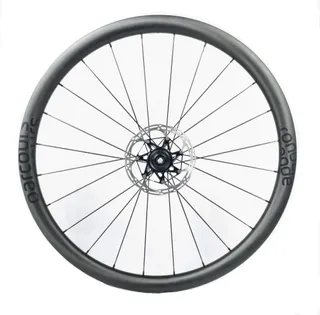 Best value all-rounder
Best value all-rounder
Best Value
A five-star rating leaves it hard to find anything not to like about this versatile and great-value wheelset.
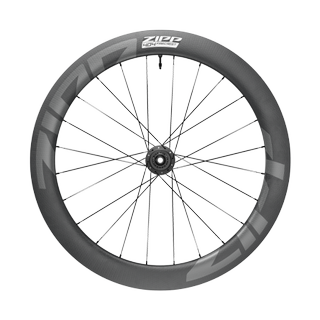
Best aero wheels
The 404s hit a sweet spot between price and performance, proving incredibly agile and responsive for a wheel nearly 60mm in depth.
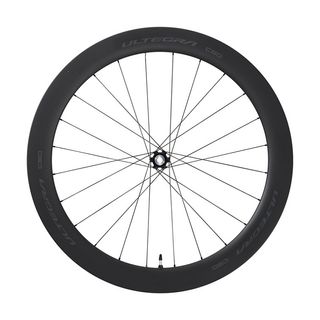
Best value aero
Performance on flat or rolling roads was brilliant, and that had me taking quite a few Strava KOMS when I gunned it.
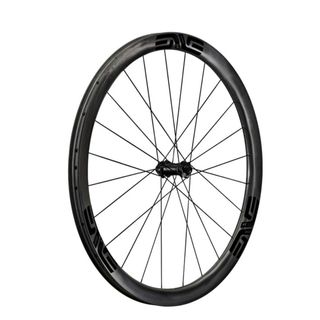
Best lightweight option
Weighing under 1,400g, these are a high-quality, lightweight all-rounder but expect to find a price tag to match.
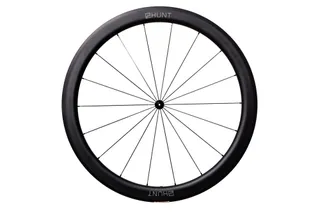 Best rim brake wheels
Best rim brake wheels
Best rim brake wheels
Competitively priced aero rim brake wheels that are unstoppable once you have them moving. Wide internal rim widths and tubeless-ready make for great tyre compatibility.
The best road bike wheels: Disc Brake
You can trust Cycling Weekly.
Best all-rounder
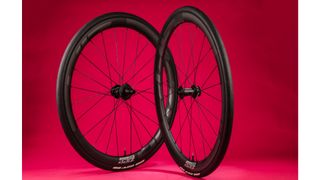
Specifications
Reasons to buy
Reasons to avoid
Zipp's current focus is on producing wheels designed to be run with wide, tubeless tires and at lower pressures. These are hookless rims with a 25mm internal width, so need to be run with rubber over 28mm and below 72psi.
The hookless set up does mean you are slightly limited on the tires which you can use, be we found the ride quality absolutely excellent, with these being one of the best you can currently buy - so we'd very happily accept that slightly narrower choice of tires for the benefits it brings.
The lower tire pressure requirement does deliver a softer ride feel - not to be confused with a slower one. The smoother ride delivers an almost blood like connection with your bike, coupled with the broader rim profile, allows for impressively balanced and confidence inspiring on bike capabilities. In fact, on test, we were able to hit 85km/h and they didn't once so much as give a tiny flutter, even in some gusty wind conditions.
A low rolling weight and a 66 point engagement hub also means these pick up fast and are capable of showing a clean pair of heels in any sprint.
Popping a set of Tangente Course G40 tires gravel tires on the rim the wheels really came into their own. Capable of taking up to 50mm tires and, over a 400km three day adventure, they only lost around 2psi.
Read more: Zipp 303 Firecrest Carbon road bike wheelset full review
Best aero
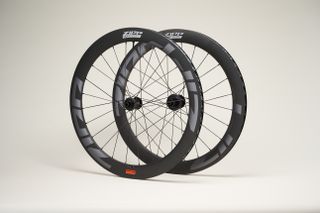
Zipp 404 Firecrest
Our expert review:
Specifications
Reasons to buy
Reasons to avoid
The wheels use Zipp’s ABLC™ Sawtooth™ Technology – specifically placed dimples on the rim that are claimed to improve aero efficiency. Zipp’s Total System Efficiency (TSE) wheel design is also implemented, apparently resulting in a 4w saving compared to the previous Zipp 404 Firecrest thanks to better vibration dampening and aero features.
The hookless setup worked perfectly with the Pirelli P Zero RS Race TLR 28mm tyres, which were both easy to put on and also interfaced nicely with the rim to produce a very smooth profile with no bulging. Being hookless, I was limited to ~70psi, lower than I usually use. This led to a feeling that was more plush rather than on the rails, which is more comfortable and by most science is faster as well. Zipp has a pressure calculator, and using that I was recommended 58.7 front and 62.4 rear. I did try this, and it just felt, for lack of a better term, floppy. I used my preferred 70 rear and 65 front for the remainder of testing.
What I really loved though was the dialled-in cornering, the combination of hookless rim profile and P Zero tyres may have aided this. One area that certainly helped with the superb cornering stability was the spoking pattern. Front and rear, both sides feature a 2-cross lacing pattern along with 24 spokes on each, which results in superb lateral stability as well as great performance under braking and acceleration.
Weight-wise, the wheels are nothing exceptional, and they are not the most spritely wheels to accelerate. However, the wheel stiffness helps keep the acceleration in line with lighter wheelsets in the group test. It’s only on the steep inclines that weight becomes truly evident, but for most rides, this will be countered by their aero performance on lesser slopes, flat ground and descents.
Best lightweight
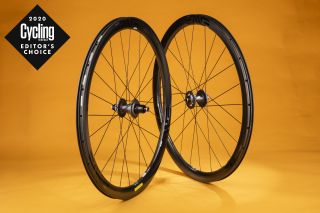
Specifications
Reasons to buy
Reasons to avoid
Enve wheels come at a premium and with their Chris King hubs and overall high-quality build and finish, the SES 3.4 Discs reflect that. They're light at under 1400g and come with the differential rim heights common to all Enve SES wheels - in this case that means a 38mm front wheel paired with a 42mm rear - along with a 21mm internal rim width.
As for the aforementioned hubs, they feature a 45-tooth engagement system, which translates to a quick pick up and minimal drag. You're also getting bearings that are made in-house, all part of a component that's designed to last a lifetime with regular servicing.
The wheels feel very stable and the wide tire stance gives a feeling of control, while they hold their speed well. They may be expensive, but the Enve SES 3.4 wheels may just be the ultimate dream upgrade - especially if you're after a set of wheels that are made in the USA
Read more: Enve SES 3.4 Disc full review
Best for windy days

Roval Rapide CLX II
Our expert review:
Specifications
Reasons to buy
Reasons to avoid
The Roval Rapide CLX II feature asymmetric rims, with the front being 51mm deep with a 35mm external width, while the rear is 60mm deep with a 30.7mm external width. Both feature a 21mm internal width. The wheels feature DT Swiss’s 180 hub internals with ceramic bearings and the Ratchet EXP 36 teeth freehub for 10 degrees of engagement. Our scales read 1,515g.
The idea here is to improve handling in crosswinds, as well as optimise aero performance where the front and rear wheels experience different practical wind angles, with the front experiencing higher yaw angles than the rear.
Out on the road, it is noticeable how stable these wheels perform in windy conditions, with the front never feeling at risk of being swept across. I was comfortable enough to remove and put on a jacket, even in blustery conditions. The wheels also felt like they flew across the flats, rolling road and descents with ease, more akin to a deeper wheelset. The low weight also helped with accelerations both on the flat and on the climbs.
The spoke lacing pattern does likely contribute to this torsional stiffness when accelerating, as the rear drive side uses 2-cross 16-spoke lacing, while the rotor side features the same pattern but 8 spokes. The front wheel is radial on the drive side with 1-cross on the rotor side. Although it exhibited good lateral stiffness for cornering, the front was a little delayed under heavy braking with less torsional stiffness.
Something everyone will notice is how hard it was to fit the tyres. These were some of the toughest wheels to mount the Pirelli P Zero RS Race 28mm TLRs on. With such a high price, these wheels needed to perform exceptionally well, and they did just that. Not perfect, potentially worth the outlay.
Affordable Zipps
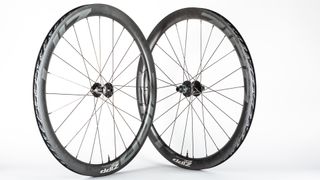
Specifications
Reasons to buy
Reasons to avoid
Zipp wheels are expensive, so the price of Zipp's 303S wheelset is a pleasant surprise. Like Zipp's other latest wheelsets, they have a wide internal rim bed and hookless bead. That lets you run lower pressures, but limits you to compatible tubeless tires of 25mm or wider only and a maximum of 72psi. You also need to look out for tire clearance, if you've got a tight frame.
Zipp says that, aerodynamically, the 303S wheels are almost the match of its much more expensive 303NSW and they feel fast, while the wide contact patch from the 23mm wide rims inspires cornering confidence.
Read more: Zipp 303S road bike wheelset full review
Best value aero
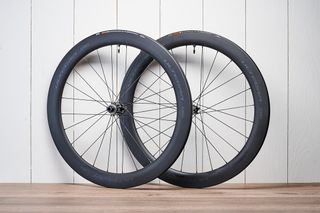
Shimano Ultegra C60
Our expert review:
Specifications
Reasons to buy
Reasons to avoid
The Shimano Ultegra 60 wheelset is one of the cheaper options in this group test at £1,258. They feature a 60mm deep profile with a 28mm external width and a 21mm internal. The claimed weight is 1,649g while the actual weight for our set was 1676g, making them one of the heaviest on test.
Fitting the tyres to the wheels was relatively easy. However, to get the tyre to seat, the valve core needed to be removed and a compressor used. Once seated they maintained pressure very well, while the Pirelli P Zero tyres sat pleasantly flush with the rim of the wheel.
Out riding the weight of the C60s is, unfortunately, noticeable. Accelerating from a low speed such as away from junctions or on steeper inclines did feel sluggish compared to the lighter options. However, excluding the weight, these wheels impressed me a lot.
Their performance on flat or rolling roads was brilliant, with the deep rim and wide tyres performing very well and remaining stable even in blustery conditions. A telling factor with these wheels is that I achieved quite a few Strava KOMS when gunning it.
Considering the level of performance from a wheelset with such a modest price, these are great value deep section wheels ideal for riders wanting to do local loops as fast as they can overall.
Best Value
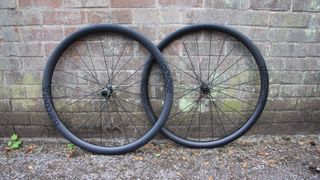
Specifications
Reasons to buy
There's very little not to like about these Parcours wheels. In fact, we gave the Ronde full marks when we reviewed them - for a mid-price wheelset it's got an impressive combination of low weight, great ride quality, aerodynamics and adaptability to road or gravel riding.
There's a differential rim depth and profile front and rear to cope with the different needs - stability at the front and power transfer at the rear, with the same 23mm internal width for both. Rims are tubeless compatible, although the hooked bead means that they can be used with a wider range of tyres than a hookless design.
Parcours Wind Tunnel tests its wheels and says that although less aero than the deeper Parcours Strade, the Ronde wheels are still best in class for their depth.
Read more: Parcours Ronde wheelset full review
Best for stiffness
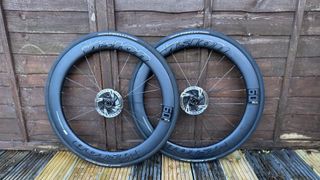
The Metron SL 60's are a 'Vision' in black
Vision Metron SL 60
Our expert review:
Specifications
Reasons to buy
Reasons to avoid
The Vision Metron 60 SL is Vision’s top-of-the-line deep-section road race wheel, featuring its latest technologies. The rims have a 21mm internal width matched with a 29mm external width, which bulges to 30mm further down the rim for improved aerodynamic performance. They are a hooked rim, which I'm still a fan of as a heavier rider, but there are no hookless options.
Spoke lacing is asymmetric on both the front and the rear, with multiple cross-lacing patterns to optimise lateral and torsional stiffness. This has worked perfectly, with the wheels feeling lightning fast to get up to speed and rock solid when cornering and braking. The new 72-tooth ratchet engagement drive also helps with this rapid acceleration while reducing the total number of moving parts, which promises better longevity and serviceability.
At 1603g, they aren’t the lightest 60mm deep sections available, but their high stiffness contributes to excellent climbing ability. Aero performance is difficult to quantify out on the road but they feel as fast as any other 60mm wheelset I have tested in the last year. Their crosswind performance is exceptionally stable though, even exhibiting a noticeable sail effect. Priced at £2049.99, they remain expensive, but within this price range, they excel across the board without compromising performance in any area. Nothing stands out as truly exceptional or class-leading, yet there are no glaring negatives, which is a challenging feat to accomplish. They are a true jack of all trades, albeit closer to a master in some areas.
The best road bike wheels: rim brakes
Best aluminum rims
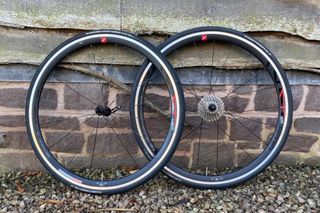
Specifications
Reasons to buy
Reasons to avoid
The Fulcrum Racing 4 C17 is an aluminium rim-brake wheelset which combines a reasonable weight - at 1,727g - with a reasonably deep section 35mm rim for improved aerodynamics.
These wheels do fare very well when it comes to stiffness. Even when setting brake clearance as tight as I dared there was no lateral flex or brake rub when cornering at speed to sprinting out of the saddle maximally. The braking was also brilliant, for rim brakes, and amongst the best I have used, giving greater confidence when descending.
However, the narrow rim width does limit the rolling resistance performance of these wheels significantly compared to other wheels with wider rims that are optimised around chunkier tires. Comparing a pair of 23mm tires on the Fulcrum Racing 4 C17 directly to a set of wheels shod with 27mm tires, the difference in rolling resistance was noticeable - with the total system weight still being close enough as to be unnoticeable .
Value-wise, these wheels are competitively priced against its rivals. Some of the other wheelsets come in at around 100g lighter, however they are mostly 24mm deep and also more expensive. With that weight difference feeling fairly negligible and the aerodynamic gains of a deeper section wheel being more beneficial across most terrains, the Fulcrum Racing 4 C17 do represent a solid choice.
Read more: Fulcrum Racing 4 road wheelset full review
Best rim brake

Specifications
Reasons to buy
Reasons to avoid
This performance wheelset is particularly important at what is probably the most competitive price point on the market. They're not the fastest to accelerate because they're 50mm deep, but once the Hunt 50 Carbon Wide Aero wheels are up to speed they're unstoppable and on our tests, these instantly increased our average ride speed.
As ever with Hunt wheels, they're tubeless-ready and have a very wide rim width because of it. Whichever tires you put on it will sit far wider than their stated widths.
Read more: Hunt 50 Carbon Wide Aero full review
Stiff and light
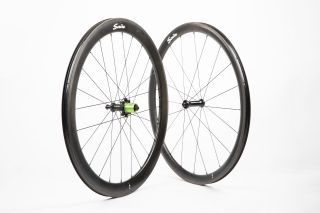
Specifications
Reasons to buy
Reasons to avoid
Scribe has put a lot of thought into creating a wheelset that promises longevity and durability, with plenty of nods to consumer satisfaction - such as customisable bearing options and extra spokes and nipples supplied as standard.
The rims themselves proved to be durable - though their bombproof quality comes at the loss of some compliance. You won't find any flex here, though, so if stiff is on your shopping list then these value for money hoops could be the perfect upgrade for you.
Read more: Scribe 3850 full review
How to choose the best road bike wheels
The thing is, if you want a wheel that is light and aerodynamic, while also being stiff to cope with the power you put out when sprinting, and hardy enough to stay straight and true when faced with rough roads, you’re going to notice a sizeable dent in your bank account. So before buying, it's important to know exactly what you want from your wheelset.
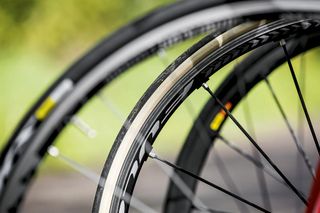
The questions below are a general guide to the things to consider when choosing between the types of wheels that are available, but fortunately for us cyclists most wheels are spread across all three types, and in general it is possible to get a very good set of do-it-all wheels.
How important is durability to you?
If you know you live somewhere with rough roads or mixed terrain then you'll probably put a great emphasis on durability and strength, and having a set of wheels that will stand the test of time. Typically, "bombproof" wheels are shallow, with a box design and an aluminium rim. That doesn't mean they're slow though, and we've been very impressed with box aluminium rims from the likes of Hunt, Mavic and DT Swiss. Similarly, though, that's not to suggest carbon isn't strong, and many pros run carbon wheels at the toughest cobbled classics, but it can offer a harsh ride on rough ground — the pros also aren't paying for or maintaining those wheels.
How important are aerodynamics to you?
If you've just bought yourself a new aero bike, then you'll probably want a wheelset with an aerodynamic edge. These are wheels that have extra material extending down from the rim, which helps the rim cut through the wind. They can give a real advantage if you're racing, or if you want to improve your average speed on your rides. It's worth bearing in mind, though, that to get the most aerodynamic benefits you need to be consistently travelling above 32kph. Of course, if you want a deep section wheel with a carbon build you're going to be spending a fair whack. You can get cheaper, aluminium builds but these tend to be a bit heavier.
How important is a lightweight set of wheels to you?
The lightest wheels are reserved for those who do a lot of climbing or live somewhere very hilly. The weight reduction is possible because of carbon fibre builds, and other neat features like lightweight spokes, carbon fibre hubs and the general removing of any excess material – hence why they tend to have a shallower rim. As you might expect, you'll need deep pockets to buy these lightweight hoops.
Different types of road bike wheels
What are clincher road bike wheels?
Your bike probably came complete with clincher wheels and this is for good reason. Clinchers are the most common type of bike wheel currently available and are defined by the type of tire they use.
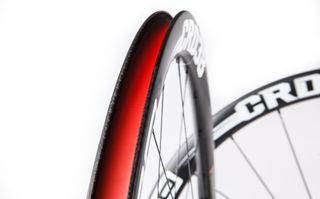
Clinchers utilise an open cross-section tire with a bead that holds it in place on the inside of the rim and uses an inner tube. This offers a great deal of convenience as it is easy to repair when you get punctures.
Carbon clincher wheels are significantly heavier than the equivalent tubulars because the rim needs to be stronger to cope with the demands of braking pressure and force from the rim. Some deep section wheels feature a carbon fairing placed over an aluminium rim. These are heavier, but are cheaper than a complete carbon rim, owing to lower manufacturing and development costs, while the aluminium brake track can lead to more consistent braking with rim brakes than many carbon rims.
What are the pros and cons of clincher wheels?
Advantages of clincher wheels
Easy to repair punctures, just by carrying spare inner tubes
Easy to change tires, can be done in minutes
Clincher tires are typically cheaper than tubulars
Disadvantages of clincher wheels
Typically heavier than a tubular rim
Higher rotational weight than a tubular
Braking surface encounters higher stress, having to withstand outward pressure of the bead and inward pressure of heat from the brakes
What are tubeless road bike wheels?
Tubeless wheels have become very popular over the last few years, with more and more brands fitting them as standard on their bikes. Instead of having an inner tube inside a tire, the tire itself creates an airtight seal against the rim, so all you have to do is inject some sealant and pump some air into the tire.
A consequence of making the rim airtight can be that it is slightly heavier, but this is somewhat offset by the lack of an inner tube. The sealant is designed to seal holes and punctures as they happen. It is still possible to get a flat on a tubeless wheel, at which point an inner tube can be placed inside, but the risk is considerably less, making them ideal for those wanting to avoid punctures. Plus, the general consensus is that these are faster than other types of wheel and tire combinations.
What are the pros and cons of tubeless wheels?
Advantages
Much lower risk of flat tires
Low rolling resistance
Disadvantages
Fiddly to set up
More weight at the rim
Generally more expensive
What are hookless tubeless road bike wheels?
The latest type of rim dispenses with the hooks that were originally designed to stop the tire from blowing off. With a hookless rim and compatible tubeless tire there's no need for the hooks anymore. Once the tire moves out of the tire bed cavity that characterises a tubeless rim and up onto the bead 'shelf', it's not going anywhere.
Not all tubeless-ready tires are compatible with all hookless rims yet – that's the only obvious drawback – but according to Zipp that will soon be a non-issue.
What are the pros and cons of hookless tubeless wheels?
Advantages
No hooks means cleaner transition between the rim and the tire – more aero
Wider internal rim with no hooks means a more stable tire with no 'lightbulbing'
Straight rim walls can be made more accurately with tighter tolerances creating a better tire interface and a lower risk of the tire blowing off of the rim
Better carbon compaction thanks to simpler manufacturing means a stronger rim
Better resin distribution thanks to simpler manufacturing means the rim can be moulded with less resin – lighter rim
Less manufacturing waste means a reduction of the costs and a lower price for the end user
Disadvantages
Not all tubeless tires are compatible with tubeless rims so tire choice is limited
Risk of tire blowing off rim with the wrong combination or overinflation
What are tubular road bike wheels?
Prior to the invention of clincher tires, tubular wheels were the only option available. Today they’re a rare sight away from racing (where teams have support) as they are an enclosed tire, with an inner tube sealed or sewn inside.
The tubular tire (or "tub") is glued or taped to the rim, making them fiddly to set up very inconvenient if you have to change a tire. Tubular tires are difficult or impossible to repair if you have a flat and a lot more expensive than clinchers.
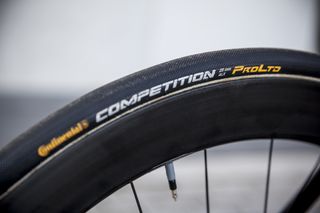
Tubular wheels are usually lighter than the clincher alternative. This is because the rim does not need to be as strong in order to hold the bead of the tire.
Bonding of the tire to the rim is crucial, in order to avoid rolling the tire off the rim while cornering. Glueing is the most traditional way and considered the most reliable, but it typically takes a couple of days to set, whereas tape is much quicker. The solvent in the glue is also harmful, whereas tape is inert.
If you are racing, riding a sportive or Gran Fondo, or training on a tubular tire and you get a puncture there are a couple of options. Sealant, such as Vittoria Pit Stop can be injected into the tire to seal the hole, but this may not work if the hole is too big.
Alternatively, a spare tub can be placed on the rim, but this will not be bonded as strongly. If you are racing, or riding with a support vehicle, tubulars can be a joy to ride, but for training rides and everyday use, even professionals use clinchers.
What are the pros and cons of tubular tires?
Advantages
Lighter wheels
Lighter rim is better for acceleration
Tubular tires roll very nicely
Can ride a short distance on a flat tire
Disadvantages
Less easy to fit than clinchers
Repairing a puncture is not as straightforward as a clincher
What is the anatomy of a road bike wheel?
Rims
The rims are usually the first thing you notice on a pair of wheels. Deeper section wheels are more aerodynamic, but are generally heavier than their shallow rim counterparts. In addition, crosswinds can catch the deeper section like a sail, which can make keeping the bike in a straight line a handful. A lower profile is much easier to control and is often lighter in weight – meaning it will accelerate faster.
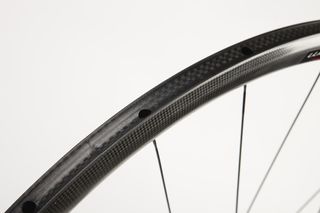
Braking surface
Having a carbon or aluminium wheel is going to directly impact the braking surface of the rim. It is easier to manufacture a perfectly flat braking surface with aluminium and the surface reacts more consistently to braking force from a brake pad, particularly when it's wet, resulting in more consistent braking. In addition, aluminium can be machined to feature grooves and patterns to improve the efficiency of the braking.
Carbon braking is consistently improving as technology moves forward, but still pales in comparison to aluminium, especially in the wet. Carbon braking surfaces can also suffer from heat build, especially if you drag your brakes for a long time, which can lead to de-lamination and failure of the rim.
The move to disc brake wheels removes the need for a braking surface on the rim, meaning that it can be built lighter and with a wider, more aerodynamic profile.
Hubs
Hubs are at the centre of the wheel and contain the axle and bearings. Higher quality hubs are better made, often with superior bearings that roll with less friction. Cartridge bearings are the usual standard on anything except the cheapest wheels because they are simple to replace, although Shimano wheels all use loose ball bearings. The smoothest bearings are ceramic ones, although they come with a price tag to match.
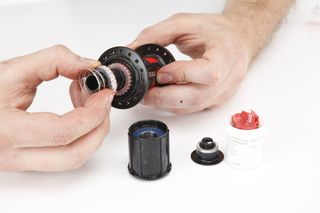
In freewheel bicycles (i.e. anything that is not a fixie), the rear hub has a freehub body which is what holds the cassette. This means you can freewheel without turning the pedals.
Whether a wheelset is Shimano/SRAM 11-speed or Campagnolo 11/12-speed compatible depends upon the freehub body, as the different cassettes have a slightly different pattern in the way they slot onto the freehub. This isn’t usually a problem as different freehub bodies can be purchased and changed on the wheel.
SRAM's 12-speed AXS groupsets utilise an XDR driver, a technology borrowed from its Eagle MTB groupsets to allow for a 10 tooth smallest cog. Shimano has also introduced a new freehub design for its latest 12-speed road groupsets, although they're backward compatible with an 11-speed Shimano freehub body.
Campagnolo has a new freehub body called N3W for its Ekar gravel groupset. Its new wheelsets will come with a compatible freehub, although the good news is that it's compatible with its 11/12-speed cassettes via an adaptor.
Note too that MTB freehubs are not compatible with road bike cassettes, as the freehub body is 1.8mm narrower on MTB wheels.
Do I need a 10, 11 or 12-speed wheelset?
Most new wheels feature a freehub body designed for 11-speed cassettes. But don’t worry if you’re still running 10-speed, as you can use a 10-speed cassette on an 11-speed freehub by using a spacer. These spacers are often included with the wheels, but if you are unsure, check with your local bike shop.
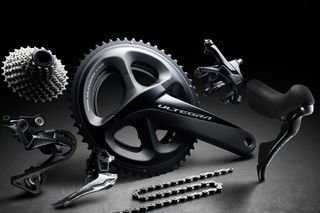
Campagnolo was the first cycling groupset maker to create a 12-speed groupset. The good news is that the cassette fits on the same body as the 11-speed cluster, meaning you should be able to keep using your old wheels. SRAM also now offer a 12-speed road groupset, eTap AXS, but you'll need an XDR driver, while Shimano's 12-speed groupsets are compatible with 11-speed Shimano freehubs.
Spokes and Nipples
Spokes provide support from the hub to the rim and distribute the pressure around the bike wheel, working in both tension and compression. Pay attention to the spoke count, as the more there are the stronger but heavier the wheel. Meanwhile, fewer spokes often make the wheel more aerodynamic. The shape of the spokes also matters, with flat/aero/bladed spokes becoming increasingly standard across all price points.
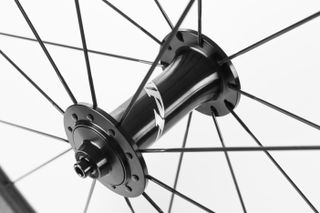
No-nonsense hub with J-bend spokes
Nipples hold the spoke in place on the rim and are typically made of brass. When a wheel is trued the spoke tension is adjusted via the nipple. Aluminium nipples can save weight, although they're more subject to corrosion than brass nipples and can freeze to the spoke or break.
Frequently asked questions about Wheels
Can I mix and match different brands of wheels with my road bike?
Sure.
Nobody's stopping you from running different wheel brands in the front and back of your road bike. You can even have different sizes in the front and back. Some bikes are sold with 96er and 69er combinations (check out 'mullet bikes' as well)
You will need to double check the wheel fits in the frame and the brakes work to avoid any issues with performance.
How we test
We've ridden hundreds of miles on these wheels in a variety of conditions, both on flat courses and on hillier rides. When a wheelset is tubeless-compatible, we'll have set it up tubeless too and recorded our experiences.
With our crew of highly experienced reviewers we know what to look for in the best road bike wheels.
Glossary
There is a lot of tech jargon associated with wheels; here's a quick guide to the terms you might encounter.
Hub Axle: There are two kinds of axle when discussing wheels; there is, firstly, the axle housed within the main body of the hub; this is what the bearings spin on, and it is important to the correct fitment based on your frame requirements.
Frame Axle: there is also the axle, which you insert through the hub to attach the wheel to your frame. Depending on your bike's standard, this is generally called the quick-release or thru-axle.
Axle width and standard: Road bikes have multiple axle spacing standards. Quick-release wheels usually run on 100 mm-wide front axles and either 130 mm-wide rear axles, which are typically used for rim brake bikes, or 135mm if a bike is designed for QR wheels for disc brakes. The axle is 9mm in diameter.
Wheels and frames with thru-axles usually have 100mm spacing at the front axle and 142mm at the rear, although a few road/gravel bikes use Boost spacing, which is 110mm front and 148mm rear. Thru-axles on road bikes are typically 12mm in diameter, although some older models may have a 15mm front.
Dropout: The dropouts are part of the frame to which the wheel sits in between. Depending on your frame standard will determine how the wheel fits in. The axle will sit in the dropout, which will have an open section for a quick-release wheel. For thru-axles, the dropout will be closed, and the wheel will rest between the two sides.
Hub: The hub is the centre of the wheel that rotates around the axle. It houses the bearings and drive mechanism, which transfers energy into forward movement. The hub also connects to the rim via spokes.
Freehub: The freehub is the part of the rear wheel to which the set of gear sprockets is attached. It turns your energy into forward movement and allows you to be freewheel. The freehub and the mechanism in which it operates are what give the wheels their trademark clicking noise.
Bearings: The hub turns on the axle via bearings. These may be loose ball bearings rolling on a cup and cone system or cartridge bearings, which are more common nowadays. Loose bearings are user-serviceable, whereas cartridge bearings need to be removed and replaced in their entirety when they become worn.
Spokes: Spokes connect the rim to the hub and provide strength and shape to your wheel. Most are made of steel, but more expensive wheelsets occasionally use carbon spokes to reduce weight. Spokes can also be engineered to reduce weight, add aerodynamic performance, and even provide additional comfort.
Nipple: Nipples are usually at the rim end of the spoke. They are effectively tightened nuts to add tension to a wheel, giving it its shape and strength. Nipples may be brass or aluminium. The former is heavier but less prone to corrosion.
Rim: The rim is the outer circular part of the wheel and is what your tyre fits to. Most rims are designed for clincher tyres, although if you run tubular tyres, you'll need a different-shaped rim. Clincher rims subdivide into those designed only to be used with tyres with inner tubes and those that are tubeless-ready. Many rims can be used with both.
Hooked Rims: Tubeless rims are further divided into hooked and hookless designs. Hooked rims can be used with tubed or set up as tubeless. They design features a hook which the tyre can grab onto when pressure is added to allow for a secure fit and quality seal.
Hookless rims do what they say on the tin. They are rims without a hook into which the tyre's bead can lock. Hookless is a newer technology in cycling, and you, the rider, must check your tyre'ss compatibility with hookless rims before fitting them.
Braking surface: Rim brake wheels will have a shiny, machined surface around the outside of the rim to which the brake pad is applied to stop your bike.
Centrelock is a standard for fitting disc brake rotors to the hub of your wheel. The disc's rotor has a centre spline that slides onto a matching spline on the hub shell directly. A large lock ring holds it in place.
Six-bolt is the other most common disc rotor fitting system. In this system, the rotor is fitted to the hub using six small bolts. These are usually M4 T25 Torq bolts, which thread directly into the hub shell and hold the rotor against a large flange.
Get The Leadout Newsletter
The latest race content, interviews, features, reviews and expert buying guides, direct to your inbox!
Paul started writing for Cycling Weekly in 2015, covering cycling tech, new bikes and product testing. Since then, he’s reviewed hundreds of bikes and thousands of other pieces of cycling equipment for the magazine and the Cycling Weekly website.
He’s been cycling for a lot longer than that though and his travels by bike have taken him all around Europe and to California. He’s been riding gravel since before gravel bikes existed too, riding a cyclocross bike through the Chilterns and along the South Downs.
-
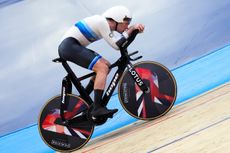 'Five or six WorldTour teams asked for my data' - Interest grows around world record breaker without a road team
'Five or six WorldTour teams asked for my data' - Interest grows around world record breaker without a road teamJosh Charlton says there's "definitely interest" in his signature
By Tom Davidson Published
-
 'I bet my age is equal to all three of theirs' - Olympic champion's mum competes at National Track Championships
'I bet my age is equal to all three of theirs' - Olympic champion's mum competes at National Track ChampionshipsDebbie Capewell, mother of Olympic gold medallist Sophie, rode the team sprint on Friday
By Tom Davidson Published
-
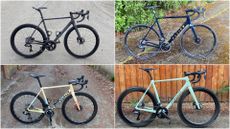 Made in the USA: Four of the best domestic carbon bicycles you should know about
Made in the USA: Four of the best domestic carbon bicycles you should know aboutOffering an alternative to bikes made overseas, these smaller operations are making high-quality carbon bikes closer to home
By Tyler Boucher Last updated
-
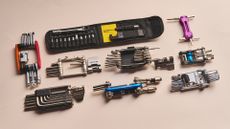 The best bike multi-tools: Function-packed bicycle tools for every kind of ride
The best bike multi-tools: Function-packed bicycle tools for every kind of rideThe best cycling multi-tools will solve the majority of your on-bike mechanical problems
By Paul Norman Last updated
-
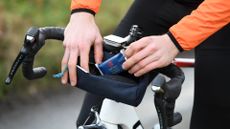 Best handlebar bags
Best handlebar bagsThe best handlebar bags will let you carry a good proportion of your bikepacking gear or just your extras for a day ride
By Stefan Abram Last updated
-
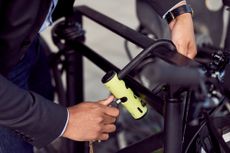 Best bike locks 2025: ranging from angle grinder-proof options to lightweight, wearable café locks
Best bike locks 2025: ranging from angle grinder-proof options to lightweight, wearable café locksIf you love your bike you will need one of the best bike locks if you plan to leave your bike unattended - We have tested the best bike locks for securing your pride and joy
By Matt Ischt-Barnard Last updated
-
 Best protein-loaded recovery drinks for cycling 2025 rated and reviewed
Best protein-loaded recovery drinks for cycling 2025 rated and reviewedWe look at the best available protein and recovery drinks to ensure you’re recovered and good to go for your next training session
By Andy Turner Last updated
-
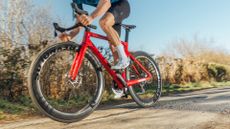 Best aero bikes 2025: fastest speed weapons ridden and rated
Best aero bikes 2025: fastest speed weapons ridden and ratedWe've ridden and rated the best aero bikes and these are our favourites
By Paul Norman Last updated
-
 The best summer cycling clothing for 2017
The best summer cycling clothing for 2017Summer is here so it's time to dress properly for the warmer weather. Our buyer's guide can help you make all the right choices when it comes to summer cycling kit
By Henry Robertshaw Published
-
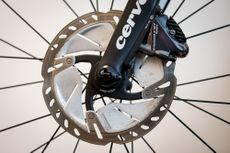 Road bike disc brakes: everything you need to know
Road bike disc brakes: everything you need to knowRoad bike disc brakes - what they are, how they work and why they are better than rim brakes
By Tim Russon Last updated